
Intel Core i7-3667U Benchmark, test et spécifications
Dernière mise à jour:
Le Intel Core i7-3667U a 2 cœurs avec 4 threads et est basé sur le 3. Gène de la série Intel Core i7. Le processeur utilise une carte mère avec le socket BGA 1023 et a été publié en Q2/2012. Le Intel Core i7-3667U marque 628 points dans le benchmark Geekbench 5 monocœur. Dans le benchmark multicœur Geekbench 5, le résultat est de 1,328 points.
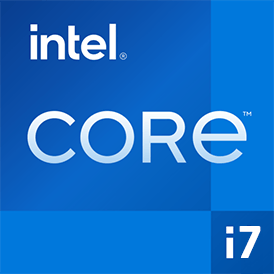
| Nom: | Intel Core i7-3667U |
|---|---|
| Famille: | Intel Core i7 (298) |
| Groupe de processeurs: | Intel Core i 3000U (12) |
| Architecture: | Ivy Bridge U |
| Segment: | Mobile |
| Génération: | 3 |
| Prédécesseur: | -- |
| Successeur: | -- |
Cœurs de processeur et fréquence de base
Le Intel Core i7-3667U a 2 cœurs de processeur et peut calculer 4 threads en parallèle. La fréquence d'horloge de Intel Core i7-3667U est 2.00 GHz (3.20 GHz). Le nombre de cœurs de processeur affecte grandement la vitesse du processeur et constitue un indicateur de performance important.
| CPU Cores / Threads: | 2 / 4 |
|---|---|
| Architecture de base: | normal |
| Cores: | 2x |
| Hyperthreading / SMT: | Oui |
|---|---|
| Overclocking: | Non |
| La fréquence: | 2.00 GHz |
| Turbo La fréquence (1 Core): | 3.20 GHz |
| Turbo La fréquence (2 Cores): | 3.00 GHz |
Graphiques internes
Le Intel Core i7-3667U a des graphiques intégrés, appelés iGPU en abrégé. Plus précisément, le Intel Core i7-3667U utilise le Intel HD Graphics 4000, qui a des shaders de texture 128 et des unités d'exécution 16. L'iGPU utilise la mémoire principale du système comme mémoire graphique et repose sur la matrice du processeur.
| Nom du GPU: | Intel HD Graphics 4000 |
|---|---|
| Fréquence GPU: | 0.35 GHz |
| GPU (Turbo): | 1.15 GHz |
| Unités d'exécution: | 16 |
| Shader: | 128 |
| Hardware Raytracing: | Non |
| Date de sortie: | Q1/2011 |
| Max. affiche: | 3 |
|---|---|
| Generation: | 7 |
| Direct X: | 11.0 |
| La technologie: | 22 nm |
| Max. GPU Mémoire: | 2 Go |
| Frame Generation: | Non |
Prise en charge du codec matériel
Un codec photo ou vidéo accéléré dans le matériel peut considérablement accélérer la vitesse de travail d'un processeur et prolonger la durée de vie de la batterie des ordinateurs portables ou des smartphones lors de la lecture de vidéos.
| h265 / HEVC (8 bit): | Non |
|---|---|
| h265 / HEVC (10 bit): | Non |
| h264: | Décoder / Encoder |
| VP8: | Non |
| VP9: | Non |
| AV1: | Non |
|---|---|
| AVC: | Décoder / Encoder |
| VC-1: | Décoder |
| JPEG: | Décoder |
Mémoire & PCIeLe processeur peut utiliser jusqu'à 32 Go mémoire dans 2 (Dual Channel) canaux mémoire. La bande passante mémoire maximale est de 25.6 Go/s. Le type de mémoire ainsi que la quantité de mémoire peuvent grandement affecter la vitesse du système. |
|
| Type de mémoire: | Bande passante mémoire: |
|---|---|
| DDR3L-1333 DDR3L-1600 DDR3-1333 DDR3-1600 | 21.3 Go/s 25.6 Go/s 21.3 Go/s 25.6 Go/s |
| Max. Mémoire: | 32 Go |
| Canaux de mémoire: | 2 (Dual Channel) |
| ECC: | Non |
| PCIe: | 2.0 x 16 |
| PCIe Bande passante: | 8.0 Go/s |
Gestion thermaleLa puissance de conception thermique (TDP en abrégé) du processeur est de 17 W. Le TDP spécifie la solution de refroidissement nécessaire pour refroidir suffisamment le processeur. Le TDP donne généralement une idée approximative de la consommation électrique réelle du CPU. |
|
|---|---|
| TDP (PL1 / PBP): | 17 W |
| TDP (PL2): | -- |
| TDP up: | -- |
| TDP down: | -- |
| Tjunction max.: | -- |
Détails techniques
Le Intel Core i7-3667U est fabriqué en 22 nm. Plus le processus de fabrication d'un processeur est petit, plus il est moderne et économe en énergie. Dans l'ensemble, le processeur a 4.00 MB cache. Un grand cache peut considérablement accélérer la vitesse du processeur dans certains cas, comme les jeux.
| La technologie: | 22 nm |
|---|---|
| Conception de puce: | Monolithique |
| Socket: | BGA 1023 |
| L2-Cache: | -- |
| L3-Cache: | 4.00 MB |
| AES-NI: | Oui |
| Systèmes d'exploitation: | Windows 10, Linux |
| La virtualisation: | VT-x, VT-x EPT |
|---|---|
| Jeu d'instructions (ISA): | x86-64 (64 bit) |
| Extensions ISA: | SSE4.1, SSE4.2, AVX |
| Date de sortie: | Q2/2012 |
| Prix de sortie: | -- |
| Numéro d'article: | -- |
| Documents: | Fiche technique |
Notez ce processeur
Résultats de référence

Les résultats du benchmark pour le Intel Core i7-3667U ont été soigneusement vérifiés par nos soins. Nous publions uniquement les résultats de référence qui ont été créés par nous ou qui ont été soumis par un visiteur puis vérifiés par un membre de l'équipe. Tous les résultats sont basés sur et remplissent nos directives de référence.
Geekbench 5, 64bit (Single-Core)
Geekbench 5 est un benchmark multi-plateformes qui utilise beaucoup la mémoire système. Une mémoire rapide va beaucoup pousser le résultat. Le test monocœur utilise un seul cœur de processeur, la quantité de cœurs ou la capacité d’hyperthreading ne comptent pas.

|
Intel Celeron N5100
4C 4T @ 2.80 GHz |
||

|
Intel Celeron 6305E
2C 2T @ 1.80 GHz |
||
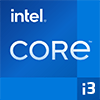
|
Intel Core i3-3210
2C 4T @ 3.20 GHz |
||
|
|
Intel Core i7-3667U
2C 4T @ 3.20 GHz |
||
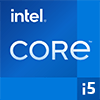
|
Intel Core i5-4360U
2C 4T @ 2.90 GHz |
||

|
Intel Core i5-4350U
2C 4T @ 2.90 GHz |
||

|
MediaTek Kompanio 828
8C 8T @ 2.60 GHz |
||
Geekbench 5, 64bit (Multi-Core)
Geekbench 5 est un benchmark multi-plateformes qui utilise beaucoup la mémoire système. Une mémoire rapide va beaucoup pousser le résultat. Le test multicœur concerne tous les cœurs de processeur et procure un avantage considérable de l'hyperthreading.

|
Intel Pentium Silver N5030
4C 4T @ 2.40 GHz |
||

|
AMD Athlon II X4 640
4C 4T @ 3.00 GHz |
||

|
Intel Celeron G3900T
2C 2T @ 2.60 GHz |
||
|
|
Intel Core i7-3667U
2C 4T @ 3.00 GHz |
||
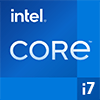
|
Intel Core i7-2620M
2C 4T @ 2.70 GHz |
||

|
Intel Core i3-3210
2C 4T @ 3.20 GHz |
||

|
MediaTek Kompanio 500
8C 8T @ 2.00 GHz |
||
Geekbench 6 (Single-Core)
Geekbench 6 est une référence pour les ordinateurs, notebooks et smartphones modernes. Ce qui est nouveau, c'est une utilisation optimisée des nouvelles architectures de processeur, par exemple basées sur le concept big.LITTLE et combinant des cœurs de processeur de différentes tailles. Le benchmark monocœur n'évalue que les performances du cœur de processeur le plus rapide, le nombre de cœurs de processeur dans un processeur n'est pas pertinent ici.

|
Intel Core i7-950
4C 8T @ 3.33 GHz |
||

|
Intel Core i5-4202Y
2C 4T @ 2.00 GHz |
||

|
Intel Core i5-4220Y
2C 4T @ 2.00 GHz |
||
|
|
Intel Core i7-3667U
2C 4T @ 3.20 GHz |
||

|
Intel Core i7-3632QM
4C 8T @ 3.20 GHz |
||

|
Intel Celeron G3930T
2C 2T @ 2.70 GHz |
||

|
Intel Xeon E5-2660 v2
10C 20T @ 3.00 GHz |
||
Geekbench 6 (Multi-Core)
Geekbench 6 est une référence pour les ordinateurs, notebooks et smartphones modernes. Ce qui est nouveau, c'est une utilisation optimisée des nouvelles architectures de processeur, par exemple basées sur le concept big.LITTLE et combinant des cœurs de processeur de différentes tailles. Le benchmark multicœur évalue les performances de tous les cœurs de processeur du processeur. Les améliorations de threads virtuels telles que AMD SMT ou Hyper-Threading d'Intel ont un impact positif sur le résultat du benchmark.

|
MediaTek Helio P70
8C 8T @ 2.10 GHz |
||

|
Intel Core i7-2620M
2C 4T @ 2.70 GHz |
||

|
Intel Core i5-3340M
2C 4T @ 2.70 GHz |
||
|
|
Intel Core i7-3667U
2C 4T @ 3.00 GHz |
||

|
Intel Core i5-2540M
2C 4T @ 2.60 GHz |
||

|
Intel Core i7-3555LE
2C 4T @ 2.50 GHz |
||

|
Apple A10 Fusion
4C 4T @ 2.34 GHz |
||
Cinebench R20 (Single-Core)
Cinebench R20 est le successeur de Cinebench R15 et est également basé sur la suite Cinema 4. Cinema 4 est un logiciel utilisé dans le monde entier pour créer des formulaires 3D. Le test monocœur utilise un seul cœur de processeur, la quantité de cœurs ou la capacité d’hyperthreading ne comptent pas.

|
AMD A10-7800
4C 4T @ 3.90 GHz |
||

|
AMD FX-8370
8C 8T @ 4.30 GHz |
||

|
Intel Core i5-760
4C 4T @ 3.33 GHz |
||
|
|
Intel Core i7-3667U
2C 4T @ 3.20 GHz |
||

|
Intel Core i7-4510U
2C 4T @ 3.10 GHz |
||

|
Intel Core i5-4210U
2C 4T @ 2.70 GHz |
||

|
Intel Celeron N5100
4C 4T @ 2.80 GHz |
||
Cinebench R20 (Multi-Core)
Cinebench R20 est le successeur de Cinebench R15 et est également basé sur la suite Cinema 4. Cinema 4 est un logiciel utilisé dans le monde entier pour créer des formulaires 3D. Le test multicœur concerne tous les cœurs de processeur et procure un avantage considérable de l'hyperthreading.

|
Intel Core i3-7100U
2C 4T @ 2.40 GHz |
||

|
Intel Pentium G3258
2C 2T @ 3.20 GHz |
||

|
AMD Athlon II X4 600e
4C 4T @ 2.20 GHz |
||
|
|
Intel Core i7-3667U
2C 4T @ 3.00 GHz |
||

|
Intel Core i3-2350M
2C 4T @ 2.30 GHz |
||

|
Intel Core m5-6Y57
2C 4T @ 2.20 GHz |
||

|
Intel Core m3-8100Y
2C 4T @ 1.10 GHz |
||
iGPU - FP32 Performance (GFLOPS simple précision)
Les performances de calcul théoriques de l'unité graphique interne du processeur avec une précision simple (32 bits) dans GFLOPS. GFLOPS indique combien de milliards d'opérations en virgule flottante l'iGPU peut effectuer par seconde.

|
AMD A6-6400K
AMD Radeon HD 8470D @ 0.80 GHz |
||

|
Intel Core i3-4005U
Intel HD Graphics 4400 @ 0.95 GHz |
||

|
Intel Core i3-4025U
Intel HD Graphics 4400 @ 0.95 GHz |
||
|
|
Intel Core i7-3667U
Intel HD Graphics 4000 @ 1.15 GHz |
||

|
Intel Core i7-3770S
Intel HD Graphics 4000 @ 1.15 GHz |
||

|
Intel Core i7-3632QM
Intel HD Graphics 4000 @ 1.15 GHz |
||

|
Intel Core i7-3630QM
Intel HD Graphics 4000 @ 1.15 GHz |
||
Résultats estimés pour PassMark CPU Mark
Certains des processeurs listés ci-dessous ont été référencés par CPU-monkey. Cependant, la majorité des processeurs n’ont pas été testés et les résultats ont été estimés à l’aide d’une formule propriétaire secrète du CPU-singe. En tant que tels, ils ne reflètent pas avec précision les valeurs de la marque de processeur Passmark et ne sont pas approuvés par PassMark Software Pty Ltd.
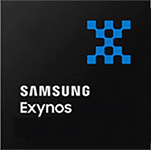
|
Samsung Exynos 9611
8C 8T @ 2.30 GHz |
||

|
AMD A6-6400K
2C 2T @ 4.10 GHz |
||

|
Intel Core i7-4650U
2C 4T @ 2.90 GHz |
||
|
|
Intel Core i7-3667U
2C 4T @ 3.00 GHz |
||

|
Intel Pentium G4500T
2C 2T @ 3.00 GHz |
||

|
Intel Core m7-6Y75
2C 4T @ 2.40 GHz |
||

|
Intel Core i5-661
2C 4T @ 3.33 GHz |
||
Benchmarks

Geekbench 5 (SC)
2,488 entrées
2,488 entrées

Geekbench 5 (MC)
2,461 entrées
2,461 entrées

Geekbench 6 (SC)
1,755 entrées
1,755 entrées

Geekbench 6 (MC)
1,703 entrées
1,703 entrées

Cinebench R20 (SC)
656 entrées
656 entrées

Cinebench R20 (MC)
604 entrées
604 entrées

FP32 SP (iGPU)
2,042 entrées
2,042 entrées

PassMark CPU-Mark
2,392 entrées
2,392 entrées

Geekbench 3 (SC)
942 entrées
942 entrées

Geekbench 3 (MC)
938 entrées
938 entrées
Comparaisons populaires
retour à l'index




